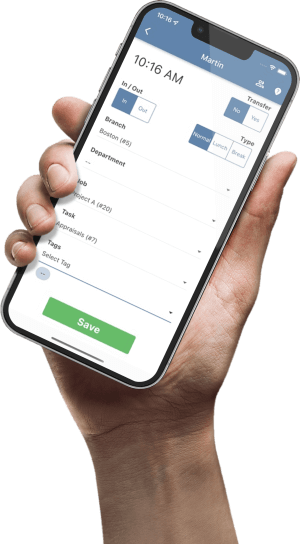Free New Hampshire Payroll Tax Calculator

Navigating Your New Hampshire Paycheck: A Step-by-Step Guide
Understanding your paycheck is key to managing your finances. While New Hampshire boasts no state income tax on wages, several other factors influence your final take-home pay. This guide, tailored for the Granite State, simplifies the components of your paycheck.
Step 1: Federal Withholding Information
Even without a state income tax, you are still subject to federal income tax. The amount withheld is determined by the information you provide on your federal W-4 form.
- Country: Ensure “United States” is selected. (This is pre-filled.)
- State: Choose “New Hampshire” from the dropdown menu. (This is pre-filled.)
- Federal Filing Status: Select your current federal filing status (e.g., Single, Married Filing Jointly, Head of Household). This aligns with how you file your annual federal tax return.
- Federal Allowances/Dependents: Enter the number of dependents and any other adjustments as indicated on your most recent Form W-4. This is a critical step in determining the amount of federal income tax withheld from your pay.
Note: New Hampshire does not have a state income tax on wages, so you will not have a state-specific filing status or state withholding allowances to claim.
Step 2: Your Pay Information
To calculate your estimated net pay, you’ll need the following details from your employer:
- Gross Wage / Pay Period: Enter your total earnings for a single pay period before any deductions are taken out.
- Pay Frequency: Select how often you are paid (e.g., Weekly, Bi-Weekly, Monthly). This is essential for accurate calculations.
- Pay Date: Select the date you receive your paycheck. While this does not affect the calculation, it is useful for your records.
Step 3: Understanding Your Deductions and Net Pay
After entering your information, the calculator will estimate your net, or “take-home,” pay. Here’s a breakdown of the typical deductions you’ll see on a New Hampshire paycheck:
- Federal Income Tax: The amount of tax withheld by your employer for the U.S. government, based on your W-4 information.
- FICA Taxes: This is a combination of two federal taxes:
- Social Security: A standard 6.2% tax on your gross wages up to the annual limit.
- Medicare: A 1.45% tax on all of your gross wages.
Important Considerations for New Hampshire Employees:
- No State Income Tax Withholding: Your paycheck will not show any deductions for New Hampshire state income tax on your wages.
- Interest and Dividends Tax: New Hampshire is phasing out its Interest and Dividends Tax. For tax year 2024, there is a 3% tax on interest and dividend income exceeding certain thresholds. This tax is not withheld from your paycheck; you are responsible for paying it directly to the state if you meet the filing requirements. This tax is set to be fully repealed in 2025.
- State Unemployment Insurance (SUI): While not deducted from your paycheck, your employer pays state unemployment insurance tax to fund unemployment benefits for workers who lose their jobs through no fault of their own.
- Other Deductions: Your paycheck may include other deductions, such as contributions to health insurance, retirement plans (like a 401(k)), or other pre-tax benefits. These will also reduce your net pay.
Found our Free New Hampshire Payroll Tax Calculator useful? Bookmark and share it.
New Hampshire's Business Tax Landscape for 2025-2027
New Hampshire's reputation as a low-tax bastion, famously lacking a general sales or individual income tax, presents a compelling narrative for business investment. However, a deeper analysis reveals a complex fiscal environment that demands sophisticated strategic planning. This article provides an exhaustive examination of the state's unique business tax structure for 2025 and beyond, moving beyond surface-level rates to uncover the underlying mechanics, political tensions, and economic realities that will shape the future of doing business in the Granite State.
Executive Summary: The state's primary business levies, the Business Profits Tax (BPT) and the Business Enterprise Tax (BET), function as a single, integrated system. The BET, levied on compensation, interest, and dividends, acts as a functional payroll tax and establishes a minimum tax floor. For 2025, the BPT rate is 7.5% and the BET is 0.55%. The critical interplay between these taxes—where BET paid is credited against BPT owed—ensures a consistent revenue stream for the state, even from unprofitable enterprises. However, legislative polarization, the recent repeal of the Interest and Dividends Tax, and the state's heavy reliance on business taxes signal a period of significant fiscal pressure and policy uncertainty.
The Architecture of New Hampshire's Business Tax System
Understanding the strategic tax landscape in New Hampshire for 2025 requires a foundational knowledge of its two core business taxes: the Business Enterprise Tax (BET) and the Business Profits Tax (BPT). These are not independent levies but rather two components of a single, interconnected system designed to ensure a broad and relatively stable base of revenue for the state.
The Business Enterprise Tax (BET): The State's Proxy Payroll Tax
Enacted in 1993, the BET is not a traditional payroll tax withheld from employee wages. Instead, it is a tax levied directly on the business entity itself, based on its "enterprise value tax base." This base is the sum of all compensation paid (wages, salaries, bonuses), interest paid, and dividends paid. Because compensation is often the largest component, the BET functions as a de facto payroll tax, tying a company's tax liability directly to the scale of its workforce.
For the 2025 tax year, the BET rate is 0.55%. This rate is the result of a multi-year legislative effort to reduce the tax's burden from its 2015 rate of 0.75%.
The Business Profits Tax (BPT): The Primary Engine of State Revenue
The Business Profits Tax (BPT), established in 1970, is the state's principal revenue generator and resembles a traditional corporate income tax. It is a flat-rate tax assessed on the taxable business profits of any organization—including C-corporations, partnerships, LLCs, and sole proprietorships—that meets the filing threshold.
For the 2025 tax year, the BPT rate is 7.5%. A significant change for multi-state businesses is New Hampshire's use of a single sales factor methodology for apportioning income, which benefits companies with a large physical presence but lower in-state sales.
The Critical Link: Understanding the BET Credit and Carryforward Mechanism
The most crucial feature of New Hampshire's system is the direct link between the BET and BPT. The amount of BET a business pays can be used as a dollar-for-dollar credit against its BPT liability for the same period. This mechanism effectively establishes the BET as a minimum tax; a business will ultimately pay the greater of the two amounts.
If the BET paid exceeds the BPT liability, the unused credit is not lost. It can be carried forward for up to ten taxable periods to offset future BPT liability. This is particularly valuable for startups or cyclical businesses with high payroll but low profits in certain years.
Filing Thresholds and Applicability for 2025
The NH Department of Revenue Administration (NHDRA) adjusts filing thresholds biennially. For the 2025 tax year, businesses must meet the following criteria to determine their filing obligations.
| Feature | Business Enterprise Tax (BET) | Business Profits Tax (BPT) |
|---|---|---|
| 2025 Tax Rate | 0.55% | 7.5% |
| Tax Base | Sum of compensation, interest, & dividends paid | Taxable business profits |
| 2025 Filing Threshold | Gross receipts > $298,000 OR Tax Base > $298,000 | Gross business income > $109,000 |
| Due Date (Corp/Prop) | 15th day of 4th month (April 15) | 15th day of 4th month (April 15) |
| Due Date (Partnership) | 15th day of 3rd month (March 15) | 15th day of 3rd month (March 15) |
The Legislative Battlefield: Policy Proposals Shaping the Future
The future of New Hampshire's business tax policy is highly uncertain. The 2025 legislative session highlights deep ideological divisions, with powerful movements advocating for both further tax cuts and significant tax increases.
The Push for Reduction: Analysis of HB 155
House Bill 155 represents the faction committed to further lowering taxes. It proposes to reduce the BET rate from 0.55% to 0.50%, effective for tax periods ending on or after December 31, 2026. Fiscal analysis projects this would result in a state revenue loss accumulating to over $46 million by 2028.
The Echo of a Counter-Movement: The Defeated HB 503
In stark contrast, the defeated House Bill 503 sought to dramatically increase taxes to fund education. It proposed raising the BPT rate to 8.5% and the BET rate to 0.75%. Although it failed, its existence proves that a substantial faction views business tax hikes as a necessary policy tool, signaling a key area of political risk for businesses.
The Post-Mortem on the I&D Tax: Fiscal Ramifications of the 2025 Repeal
A major structural change takes full effect in 2025: the complete repeal of the Interest and Dividends (I&D) Tax. While celebrated by some, its elimination removes a key revenue stream and places even greater fiscal pressure on the BPT and BET, making them the central battleground for future debates about state spending.
The Economic Reality: Growth Engine or Budgetary Strain?
While low business tax rates are central to the "New Hampshire Advantage," rigorous analysis suggests a more complex reality. The state's fiscal structure is fragile, and the economic benefits of past tax cuts are debatable.
An Unparalleled Reliance on Business Tax Revenue
New Hampshire's lack of a broad-based income or sales tax makes it uniquely dependent on business taxes, which account for an estimated 36% to 39% of state tax revenue—the highest percentage in the nation. This reliance creates significant risks from economic volatility and revenue concentration. In 2022, just 119 large businesses paid over 40% of all BPT revenue, tethering the state's fiscal health to the fortunes of a few.
A Region in Context: Benchmarking New Hampshire's Business Tax Competitiveness
While New Hampshire's BPT rate is competitive, a holistic view is necessary. Its single sales factor apportionment offers a distinct advantage for certain businesses, but other payroll-related costs, like unemployment insurance, can be higher than in neighboring states.
| Tax Component | New Hampshire | Massachusetts | Maine | Vermont |
|---|---|---|---|---|
| Top Corp/Business Profits Rate | 7.5% | 8.0% | 8.93% | 8.5% |
| Single Sales Factor | Yes | Yes | No | No |
| SUI New Employer Rate | 2.7% | 2.13% | 2.41% | 1.0% |
| SUI Taxable Wage Base | $14,000 | $15,000 | $12,000 | $14,800 |
A Practical Guide to Compliance and Administration
While the strategic landscape is complex, the operational aspects of compliance are managed through a structured system. Adherence is critical, as the state has increased the interest rate on underpayments to 10% for 2025.
A Calendar for Compliance: Deadlines and Estimated Payments
Businesses must make quarterly estimated payments if their BPT liability is expected to exceed $200 or BET liability to exceed $260. An automatic seven-month extension to file is available, but it is not an extension to pay; 100% of the tax due must be paid by the original deadline to qualify.
Demystifying the Forms and the Granite Tax Connect (GTC) Portal
The NHDRA has invested heavily in its online portal, Granite Tax Connect (GTC), a one-stop hub for businesses to file returns, make payments, manage accounts, and access forms. Always ensure you are using the correct forms for the specific tax year you are filing, as they are updated annually.
Strategic Recommendations and Forward Outlook
Navigating New Hampshire's evolving tax landscape requires proactive strategic planning. Businesses should focus on leveraging available credits and preparing for future volatility.
Unlocking Value: A Guide to New Hampshire's Business Tax Credits
One of the most effective ways to manage tax liability is by using the state's various business tax credits, which provide a dollar-for-dollar reduction against BPT and BET liability.
| Tax Credit Name | Purpose & Benefit | Carryforward Period |
|---|---|---|
| Community Development Finance Authority (CDFA) | 75% credit on donations to approved community development projects. | 5 years |
| Research & Development (R&D) | Credit for qualified manufacturing R&D expenditures in NH. | 5 years |
| Economic Revitalization Zone (ERZ) | Credit for projects improving infrastructure and creating jobs in designated zones. | Varies |
| Granite State Paid Family & Medical Leave | Credit for businesses offering qualifying PFML plans to employees. | Varies |
Scenario Modeling for Legislative Volatility
The legislative polarization creates significant uncertainty. A prudent business cannot assume current rates will remain stable. Financial planning should incorporate robust scenario modeling to prepare for potential rate decreases (like HB 155), significant rate increases (like the defeated HB 503), or cuts to public services due to revenue shortfalls.
Concluding Analysis: Long-Term Risk and Strategic Positioning
The primary long-term risk of operating in New Hampshire is not its current tax rates, but the fiscal and political instability stemming from its fragile revenue structure. Businesses must price this instability into investment decisions. The optimal strategy involves maximizing current advantages (like the decoupling from the federal interest expense limitation), closely monitoring legislative threats (especially to the BET), and advocating for a more stable and predictable fiscal framework that can sustainably fund the essential public services that underpin a healthy business ecosystem.
Simplify Your New Hampshire Payroll
Navigating New Hampshire's unique BPT and BET can be complex. TimeTrex offers comprehensive payroll solutions that help you stay compliant, manage your compensation-related tax base, and free up time to focus on growing your business.
Learn More About TimeTrex Payroll ServicesOther Payroll Tax Calculators
Loading other available calculators...
Disclaimer: The content provided on this webpage is for informational purposes only and is not intended to be a substitute for professional advice. While we strive to ensure the accuracy and timeliness of the information presented here, the details may change over time or vary in different jurisdictions. Therefore, we do not guarantee the completeness, reliability, or absolute accuracy of this information. The information on this page should not be used as a basis for making legal, financial, or any other key decisions. We strongly advise consulting with a qualified professional or expert in the relevant field for specific advice, guidance, or services. By using this webpage, you acknowledge that the information is offered “as is” and that we are not liable for any errors, omissions, or inaccuracies in the content, nor for any actions taken based on the information provided. We shall not be held liable for any direct, indirect, incidental, consequential, or punitive damages arising out of your access to, use of, or reliance on any content on this page.
Trusted By
Trusted by 3.2M+ Employees: 21 Years of Service Across Startups to Fortune 500 Enterprises
Join our ever-growing community of satisfied customers today and experience the unparalleled benefits of TimeTrex.










Strength In Numbers
Join The Companies Already Benefiting From TimeTrex
Time To Clock-In
Start your 30-day free trial!
Experience the Ultimate Workforce Solution and Revolutionize Your Business Today
- Eliminate Errors
- Simple & Easy To Use
- Real-time Reporting

Saving businesses time and money through better workforce management since 2003.
Copyright © 2025 TimeTrex. All Rights Reserved.
